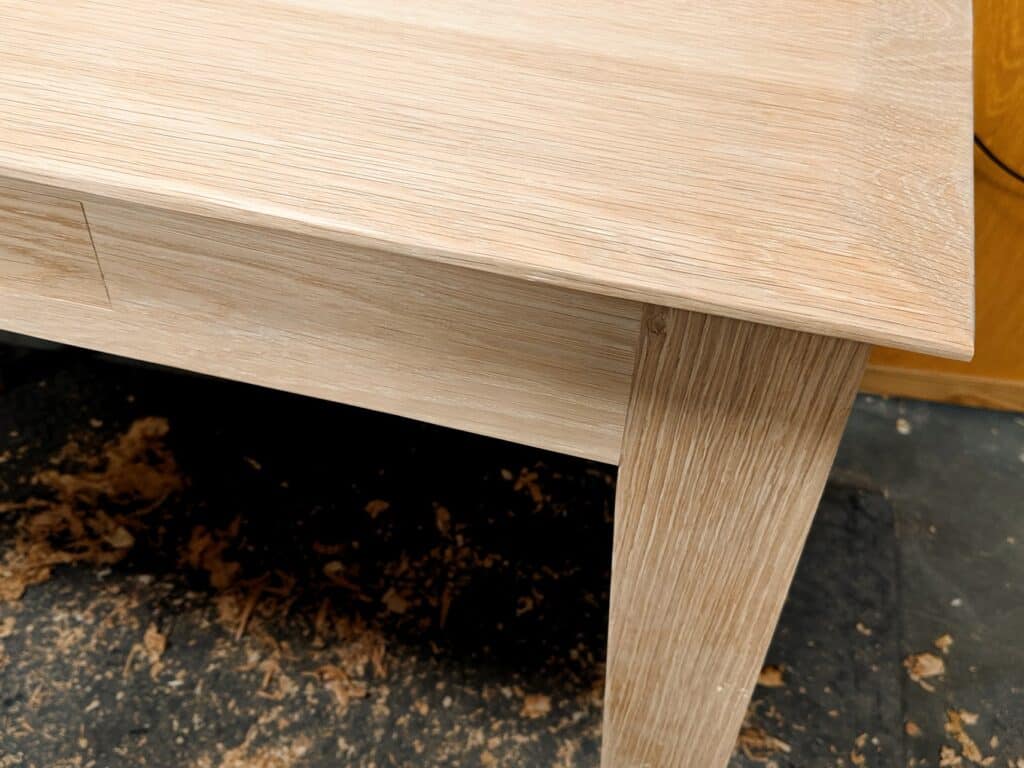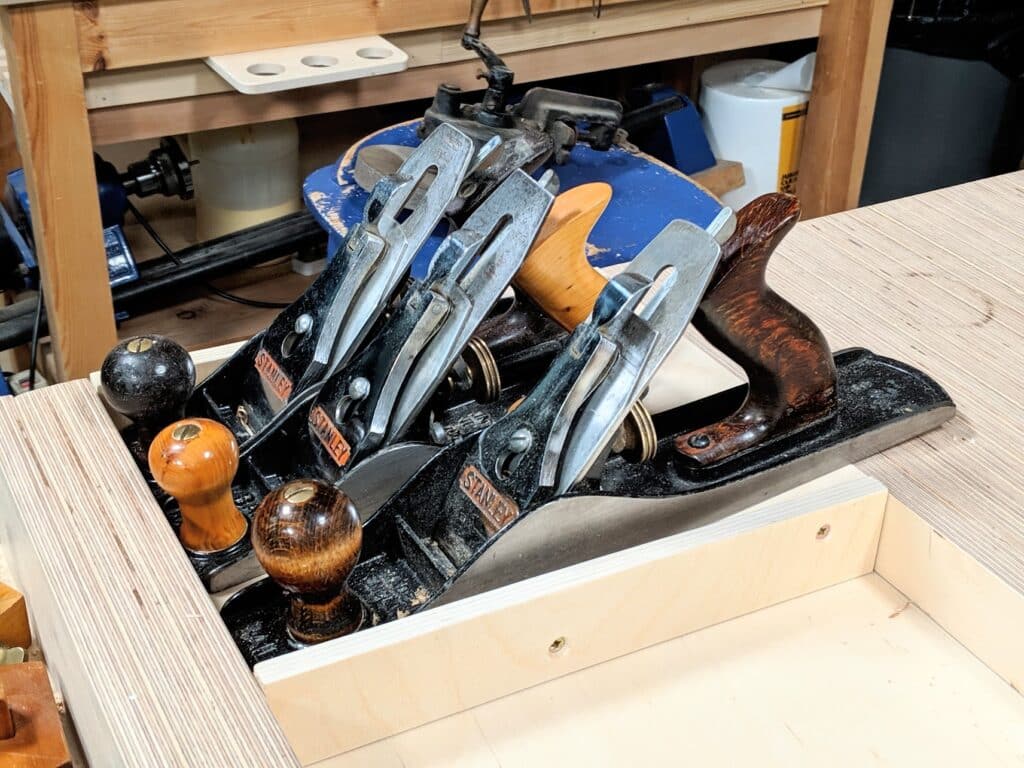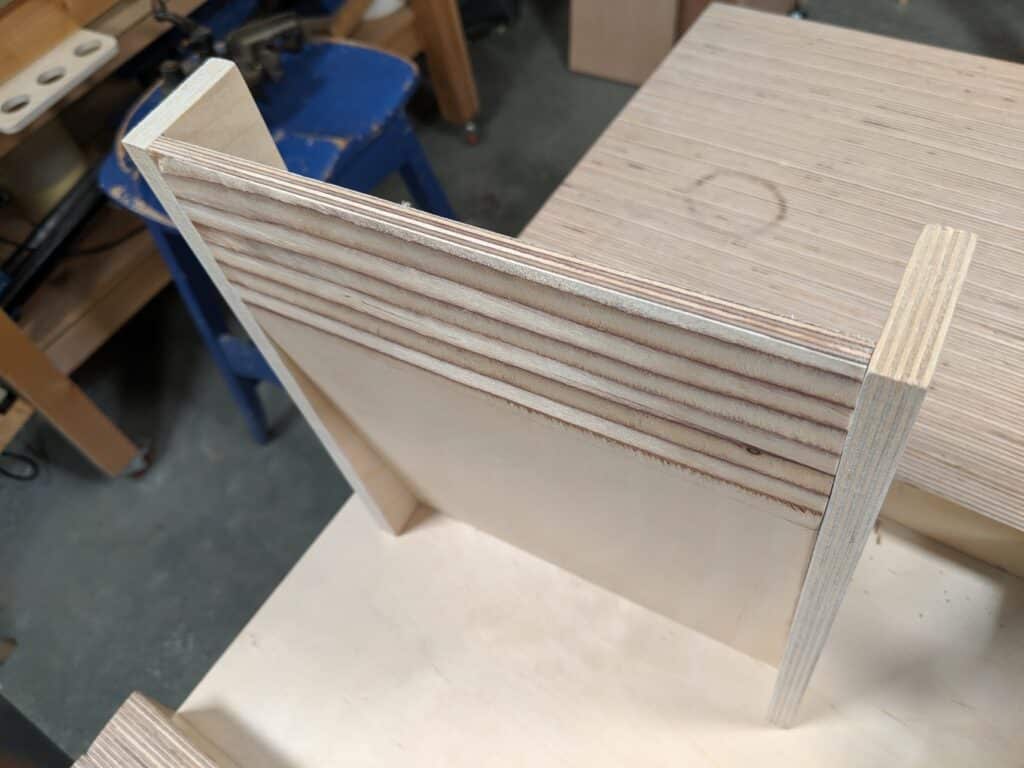Another Design
In any given day 50 ideas cross my mind quick as a flash and I make myself a note with each one. The mental ones usually get lost in the milieu of an overactive mind. Where they go from there depends on memory recall. Not all design concepts come to pass beyond the note, sketch or whatever other means I use to create memory lists. I have shavings saved in my box from 10 years ago scribbles on shavings, blocks of wood and scraps of paper like newspaper. I have the sketches of designs I did for people like Phil and Wendy Gramm, both of whom are US economists and Phil Gramm was of course a US Senator. I have scribbles for other famous people too, a President or two even. Often my notes start out on pieces of wood, a shaving on my bench may have no value except to me yet a reverse ogee cross my mind a pencil behind my ear recorded it for consideration later. This week it happened again. I have a new design that lends itself to teaching a few new and unseen concepts and this one will most likely teach you several of my secret methods you will never have considered. I think you’ll like them and the piece. I just put the last coat of finish on today.

Working through this design I realised how much I do habitually to create my designs. The original concept might well be sparked by some influence and although I don’t copy designs per se I do see proportions I like and I will take down measurements for reference later. My new project is adaptable to a variety of different uses. Though my first thought was for one alone, it quickly became evident that I could find six options I liked the idea of. Anyway I made it and any doubts or questions I had were resolved by the conclusion of it.

Then of course there is the serendipitous design. This one comes about because you found something handy and you then struck up a conversation with your mind to make something more permanent. You may not have noticed yet but I have permanently installed the plywood workbench in my workshop. It’s actually the prototype one that is fully fitted out with under-the-well-board storage, a tool trough, end of bench shelves for sharpening equipment and then the main under-bench shelf. I had a piece of 1/4″ plywood elevated in the well to my right and I found my planes were more poised and ready for action that when they were in the well. I liked it and the efficiency of presentation.

A few minutes later I had my customised version in full use. the soft padding is a remnant from a table protector. This cushioning eases my landing of the planes and avoids mis-sets.


What a lovely idea!
Thanks Paul!
Ha! Pilot Paul is bringing in the planes for a soft landing!
Nice idea, Paul!
Thanks Paul. As a beginning hobby woodworker I struggle to come up with designs. I would love to hear more of your evolution from apprentice to designer and what helped.
I’ve been reading the old posts. In one of them you talk about how your wall clock was never meant to be just a final design but rather a teaching tool and that there was still plenty of room left to refine the design. Maybe you could film an episode on design where you sit with a sketch book or something and show us how you come up with designs and the what is going through your mind. I suggest the wall clock only because many at this point have seen it at this point.
I have a single shaving that has a note on it that’s dear to me, going to keep it forever 🙂
“A single shaving with a note on it”. I used your trick, writing each grandchilds name on 1″ stock then watched them staring in amazement as I planed off each one….to see their face was a lovely…….4 shavings now hang in my garage ….note says their name
Paul, what plans are underway, or in the works, for the hand grinder atop your blue stool in the first photograph of this blog post. I almost missed it altogether. You know, “ inquiring minds …,” and all that stuff. Sorry, I veered off track.
… sorry, in the second photograph (the mind is the first thing to go).
Hand crank grinder 🙂 I have one. I use it to regrind chisels, plane irons, etc. Could you show some tips how to use it best or tell us some stories about this device? How it was used before electrical ones? Is it mostly dead like hand drills vs electrical drills / screwdrivers?
Mine is still very much alive…. Nothing wrong with it!
A hand-cranked benchgrinder is the only one I have, it works very nicely. My mother found it at a car-boot sale in a trailer, under a lot of other stuff. She only saw a small part of it, pulled it out, saw it was a hand-cranked grinder (of which she knew I was interested in), and bought it for a whopping 2.50 euro. It’s an Ixion one from around WW1. This one is a sturdy one that mounts with four large bolts to the top of a wall-mounted cabinet/desk I made for it. Most hand-cranked grinders have a clampingscrew to mount them on a (kitchen) table.
When I got it I was happy but noticed slight play on the main shaft. Suspecting the (what I thought was a) bronze bearing bushing was worn, I intended to make a new bushing for it. Only later, when cleaning and re-greasing, I noticed it actually had an adjustable cup-and-cone bearing as in bicycle wheels, with oil nipple. It was simply a matter of slightly tightening the cup to remove play. What a joy to have equipment that is so easy to maintain and adjust!
Have made a grinding attachment jig for mine (based on the one from Tormek). Works a treat. Only snag is that you get a bit less control when grinding due to having only one hand available for the work, the other one cranking. But that can be solved by employing a ‘junior-apprentice’ to do the cranking. I suspect most young children won’t be able to resist temptation to crank it once they spot it….
Mine is red, KEEN, it attaches to the table, I paid 3 euro. It’s a very simple one, no bearings. I can’t say it’s very precise, but it works. For chisels, hand plane irons and stuff like that it is ok. I have some drill bits I want to learn to sharpen with it, probably I have to make a better tool rest for drill bits.
I must admit that I cannot fathom why people don’t use them more for grinding bevels should they need to be ground. Mine is geared and it develops great speed but never burns the steel unless I’m neglectful to move.
Mine also has a gear which make it rotate at a higher speed, but I don’t think I need high speed. I have white coarse wheel on it. I use it mostly after I buy an old, well beaten chisel or if I have a nick. Then I go with fine, extra fine diamond plates and green paste.
If for straight chisels I get used with it, for round chisels and drill bits, I have to learn.
I remember my grand fathers always had one of this 🙂 . I suppose it’s a tool like hand drills, nice to use, but if there is an electric one it is used most.
Another advantage is infinitely adjustable grinding speed, without the need for a Variable Frequency Drive (VFD). Mine is also geared and installed near the entry of the shed. I don’t recall any visitors to the shed who did not give the machine a quick try by spinning the handle. It’s something that attracts the child in all of us, just as handdrills do. So quick and easy to give HSS twist drills a quick touch-up (freehand) before drilling stainless steel that it’s become routine for any drilling I do in SS. The drills are sharp again before an electrical bench grinder would’ve reached full speed….
BTW, you have better eyes than I do…. it took me a while to spot the grinder initially. I really miss the days of the high-resolution clickable images, I spent as much time viewing all the things in the background as reading the actual article.
yes, it was better with high res images
this grinders are also relatively silent, this is what I love
Hand crank grinder? My grandfather had one of those in his basement workshop. It was painted red but more to the point I remember it had the abrasive wheel in the position that in Paul’s photo seems to show two vice like jaws? Is this really some table clamped hand crank vice instead? I studied the photo carefully only because Randy picked up on it, I would otherwise not have seen it. I could of course be completely wrong. However, we are off subject and I’m intrigued at Paul’s hint on “Secret methods” on this upcoming project.
Paul, I’ve read a lot of your blog posts and have looked at most of the videos you’ve produced. I learn a lot from all of them. A question that keeps coming up in my “education/apprenticeship” is this: How do you size your parts? I’ve noticed most of the thickness dimensions are in the 1 inch range. As you know, unless you purchase rough-sawn lumber 5/4, everything available to us is 3/4 s4s. I know how to manage size differences in designs, but is the 1 inch dimensions critical or just a ballpark figure because that is what you have available to you? An example: A typical 6-board chest is made with 1 inch thick lumber. Can I use 3/4 s4s instead and not have a chest that is unlikely to survive 50+ years? Thanks for all you’ve done to make learning so enjoyable.
On Fine Woodworking Live Podcast from the week of 07Mar2019, they had a guest panel of well known woodworkers on the show that was talking. Chris Becksvoort had a segment and this specific topic came up. Chris stated one of the problems he typically sees in pieces is a lack of proper proportion with material either being too thick or thin. As best I can tell from this talk and others, proportion is very important from an aesthetic perspective. Being a beginner woodworker I know I struggle with this as well.
Since you mentioned FW, go check out a FW article by Graham Blackburn on proportions covering tables, chairs, boxes, cabinets etc…pretty much everything a typical woodworker does. The Golden ratios are a guide, not a rule, and you can find many great pieces that do not follow the “Golden Rule.” If you do prototypes, they will tell you more than nay formulas. (Another reason why I sometimes have more than one version of a build completed!)
Thanks. I will look it up. A good book that I read this year is one from Lost Art Press called By Hand and Eye from George R. Walker & Jim Tolpin. This book talk about the use of simple proportions obtainable from using dividers like our ancestors did to arrive a good proportions.
Speaking of prototypes, I recently made my dad and nice cherry box that was 10″ long by 5″ wide” 5″ tall to store this birthday gifts (100 year old mortise gauge and reproduction of Stanley self retracting tape measure. He and I both know the real gift is the box.
I thought the 2:1:1 ratio would look nice. It didn’t. You are correct that prototypes are helpful.
10″ long by 5″ wide” 5″ tall
If the Golden Solid guide is used, one could do a box close to (assuming 10″ is required for the length of the gauge, and even number are preferred):
10″ long by 4″ wide by 6″ tall (width and height interchangeable).
But form can follow function, and the above sizing could become irrelevant.
Sleek joints. May I borrow your wood welder?
Finding the correct welding rods for the species of timber is the problem!
Is that a bevel up table? Or is it just the picture. Also, great quiver for your bench planes.
Hello Paul,
I’m just catching up with your Blogs and I realise this is a bit out of context. You have spoken recently about Mesquite wood.What sort of wood is it ? I’m also assuming it’s not available in the UK (at least no one I’ve asked has heard of it).
Use the search button on my blog page and just type in Mesquite. There are a few articles there to answer your question
I always look forward with pleasure to read your blog every Monday morning Here in Canada we are celebrating Victoria Day. From my kitchen table I can see a number of my projects inspired by you which adorn my backyard and garden. If you are celebrating our beloved Queen, have a day that will inspire.
Paul used the grinder in the video telling how to change a #4 into a scrub plane, he used it to put a camber on the blade.
I enjoy your thoughts on design, it’s teaching me to draw a brief sketch of an idea or perhaps something I see. I think at Least some of our thoughts are remembered thing we read or saw, some is also pure us.